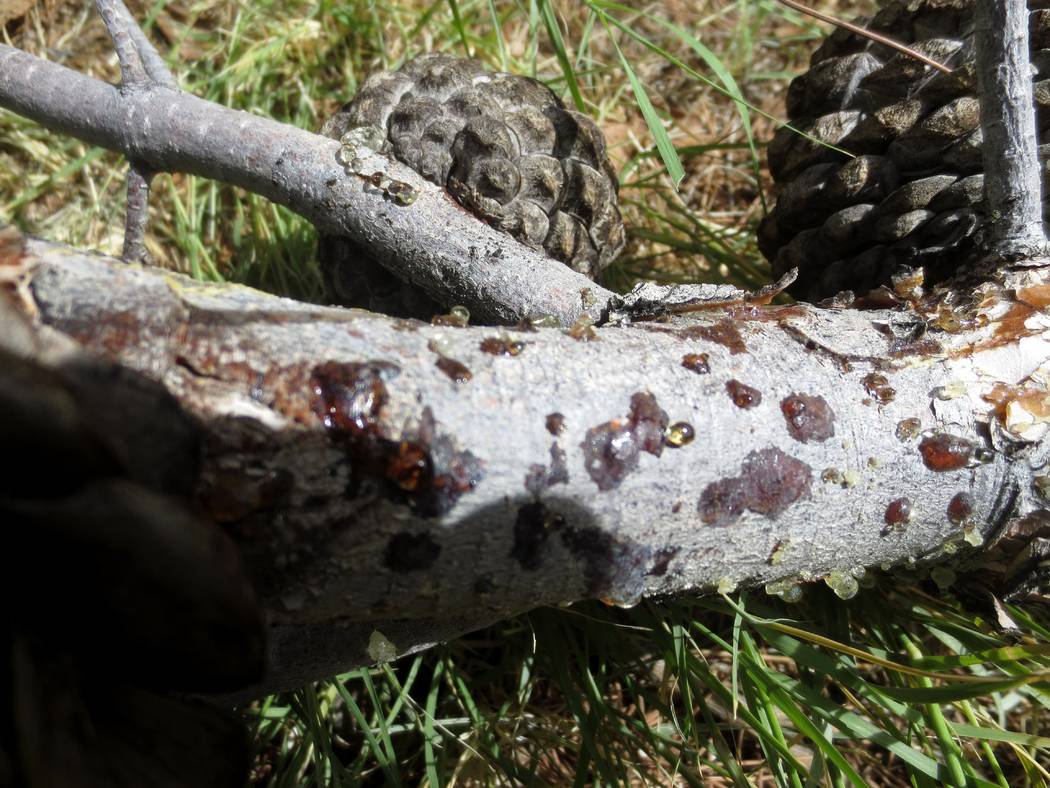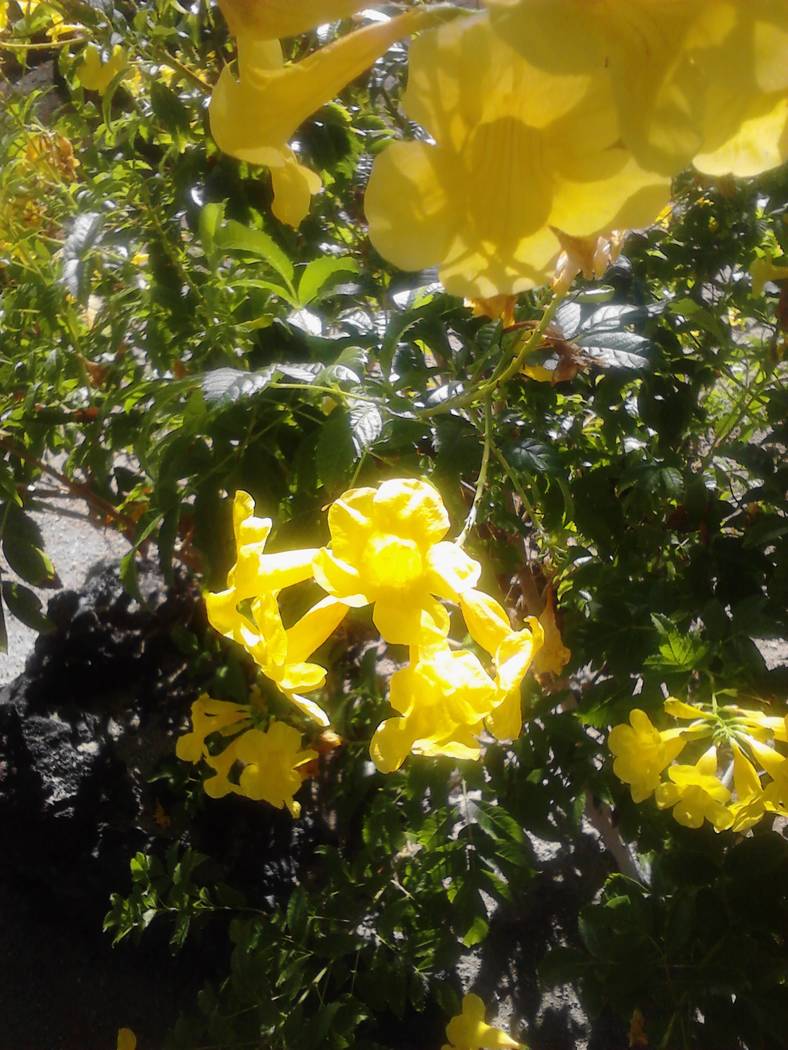Chlorinated pool water not safe for irrigating plants
Q: We have a nice size pool we must drain for maintenance. Is it safe to use the water for watering plants? We have a small lawn and some raised beds with vegetables.
A: It’s a waste, but fresh pool water is not safe for irrigating plants. It’s because the chlorine in pool water is very toxic to plants. If the chlorine level is low enough, it’s possible to use it.
Chlorine is a great disinfectant and used for killing human pathogens associated with food crops such as E. coli, cyclospora, salmonella and hepatitis. It is used to wash harvested vegetables and fruit to prevent human illness. Disinfecting food crops from rotting organisms also prolongs their shelf life, the length of time they can be kept after harvest.
Chlorine keeps algae and bacteria in pool water under control. But the chlorine level must be kept high enough to keep their populations under control. Periodically, pool water is “shocked” or hyper-chlorinated, which raises the chlorine level even higher. During hot weather, chlorine is added to pool water more often than during cool weather.
Pool water is considered grey water. There are regulations in communities that permit or do not permit the use of grey water for irrigation and might result in fines.
It is possible to use this water for irrigating most plants if the chlorine level of the water is well below 1 ppm. This is accomplished by not adding chlorine to the pool water until this critical chlorine level is reached. Loss of chlorine happens faster on hot days than cool days and faster if the pool pump is mixing the water, rather than letting it stand.
Q: My pine tree has the tips dying back and sap coming from the limbs below it. I have seven trees that are affected the same way. They get plenty of water. I have been treating the trees with bug poison poured on the soil, but it doesn’t seem to help. What kind of bug does this?
A: I don’t believe this is an insect problem with pines growing here, so “bug poison” is a waste of time and money and an unwelcome intrusion on the environment. There is a pine shoot tip moth that caused this type of tip dieback in newly planted pine trees perhaps 25 years ago here, but I have not seen this insect causing problems here since then.
The pine shoot tip moth burrows or mines in the new growth in the ends of branches, causing new growth to die back. They are easy to discover. Cut off dead growth in 1-inch increments starting with the dead growth and approaching healthy growth.
If they are still present, you will discover a worm or larva in the branch. If they caused dieback, then matured into the moth and flew away, you will see tunneling in the dead branch remaining. But like I said, I have not seen it here for many years, so I kind of doubt it. Besides, this is usually a problem with newly planted pine trees, and the infestation began at the nursery.
Sap oozing from a living branch is a sign of stress, disease or both. Oozing sap from a branch could be related to stress from a lack of water. A lack of water over several years results in thinning of needles in the canopy, i.e., you could see through the canopy easily, and new growth with needles is less than 6 or 8 inches long.
Recent lack of water results in interior needle drop, and the remaining needles would be brown or dead on the tips. A recent lack of water, if severe, could result in branch dieback, along with oozing sap from larger branches.
You mention they get plenty of water, but if the area irrigated under these trees has not increased for several years, it is possible they are not getting enough water delivered for an expanding root system. Roots need to spread long distances from the trunk to gather enough water and stabilize a growing tree. Irrigate an area no less than half the size of the tree’ s canopy.
Tip and branch dieback of Aleppo pine is quite common during winter months. It is so common it has been given a name: Aleppo pine blight. You didn’t mention if these pine trees are Aleppo, but I see this often in the desert Southwest.
The dieback on Aleppo pine can be so severe that entire branches die, rather than just shoot tips. Dieback from Aleppo pine blight is scattered through the pine tree canopy or localized in one spot or one branch but usually not spread over the entire canopy.
Branch dieback caused by improper application of weed killers happens occasionally. The browning or dieback is usually on the same side or sides of trees where chemicals were applied. The usual culprit is applying these chemicals on hot or windy days, particularly when applied to rock surfaces or rock mulch.
Sometimes weed killers move with water and spraying wet areas or moving water will result in damage or plant death. Chemical damage to trees may also result in oozing sap from branches because of stress.
Q: My palm tree is about 20 years old and this year put out big bunches of berries. It does not seem like a date to me, because they are small and round with not much flesh around the seed. Are they edible by humans?
A: It depends on the palm. Many types of date palms have been planted throughout Las Vegas, and these trees frequently produce a lot of fruit at several times during the year. Date palms cross-pollinate easily, so there is a lot of variability in fruit quality, color, size and time of year they produce fruit.
All palms I know of in the Mojave Desert produce flowers and fruit when sexually mature. The fruit ranges from delicious to inedible to toxic, depending on the palm.
To my knowledge, there are no palms that survive and produce toxic fruit in the Mojave Desert. There are some which produce what I call inedible fruit.
There are palms that produce fruit that you can eat, but you don’t want to eat them, because they taste awful or don’t have much flesh, such as the Canary Island palm and the California and Mexican fan palms.
There are other palms that produce edible fruit in the Mojave Desert, such as the jelly palm and the Chilean wine palm. As far as tree size goes, the jelly palm is more desirable as a landscape tree, because it is much smaller at maturity than the huge Chilean wine palm. This palm lays claim to the largest palm in the world.
Watch the birds. If the birds pick up the fruit from the ground and eat it, it’s probably edible. If birds leave it alone, it probably isn’t.
Q: Just wondering if and when I should prune my Tecoma yellow bells.
A: Yellow bells or Tecoma stans can be pruned lightly any time of the year, but it’s best to reserve heavy pruning cuts to the winter months. It’s difficult to kill this plant by pruning.
If this plant is getting too large for the area given it, you can cut it close to the ground, and it will sucker from the base, much like oleander and lantana. It responds to this type of pruning similarly to oleander because of its size.
To flower, the parts growing above ground must come back into balance with its roots. It is likely to grow rapidly without flowering until it reaches the magic ratio of shoots to roots, when it will start flowering again. This is probably when it reaches about 3 feet in height.
Yellow bells can be pruned in other ways. If the plant is getting too tall, reduce its height by cutting the tallest branches back to a crotch or the ground.
If you want to make it taller and expose the bottom stems or trunks, then reduce the number of trunks or stems to seven or fewer, trying to keep an odd number. Cut the smallest stems just below ground and remove side branches from the remaining to about knee height.
Bob Morris is a horticulture expert and professor emeritus of the University of Nevada, Las Vegas. Visit his blog at xtremehorticulture.blogspot.com. Send questions to Extremehort@aol.com.



















